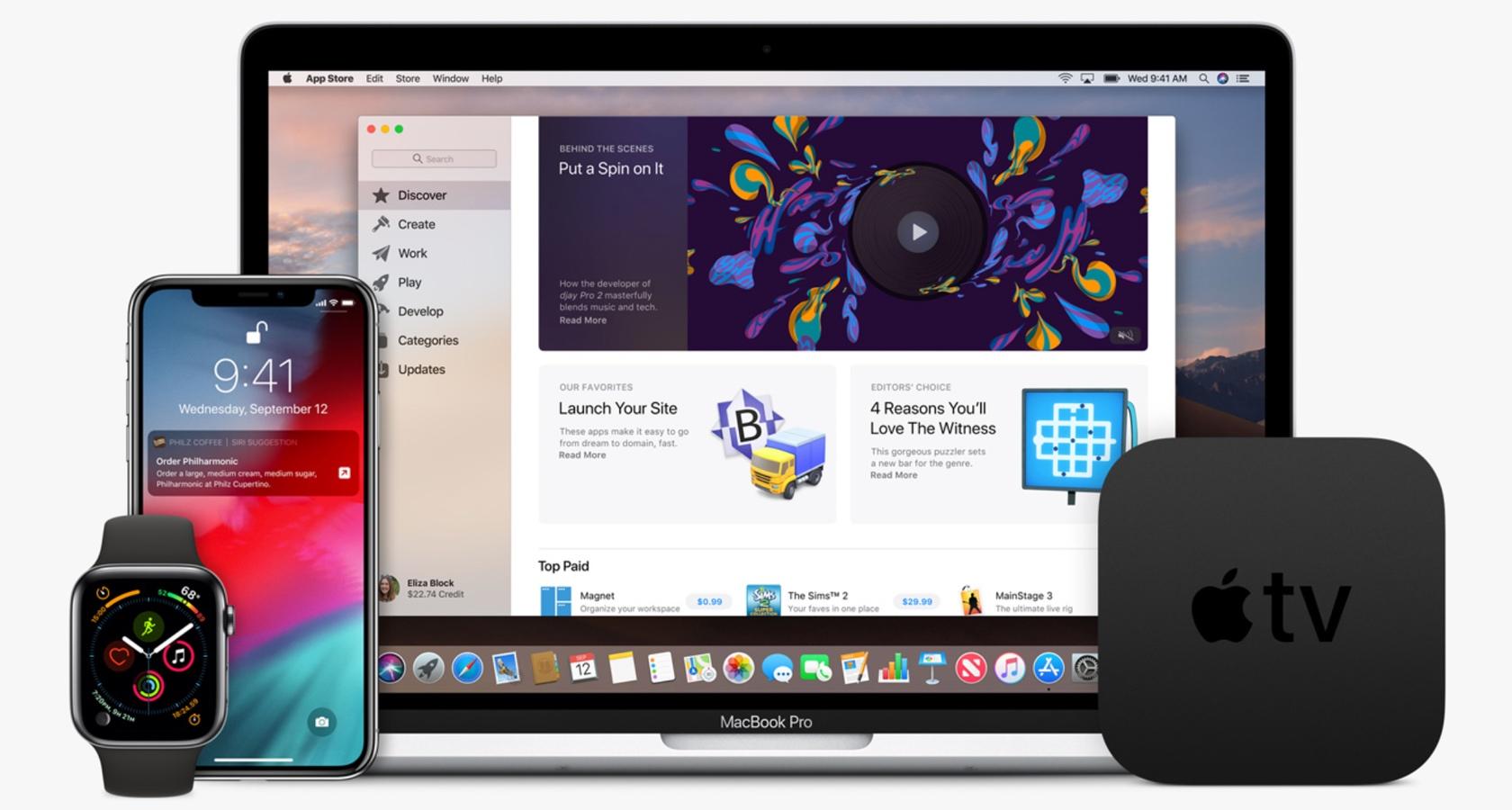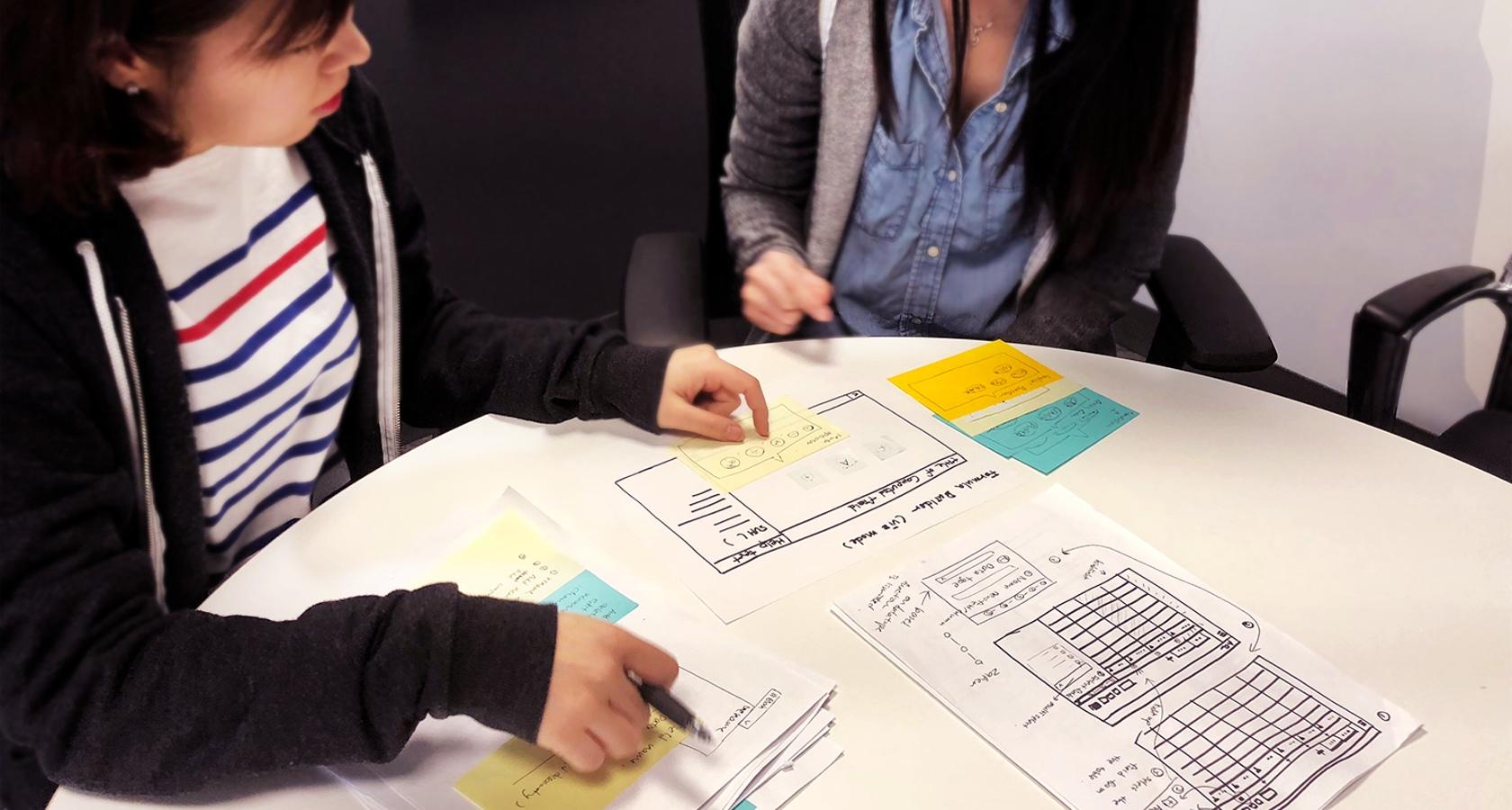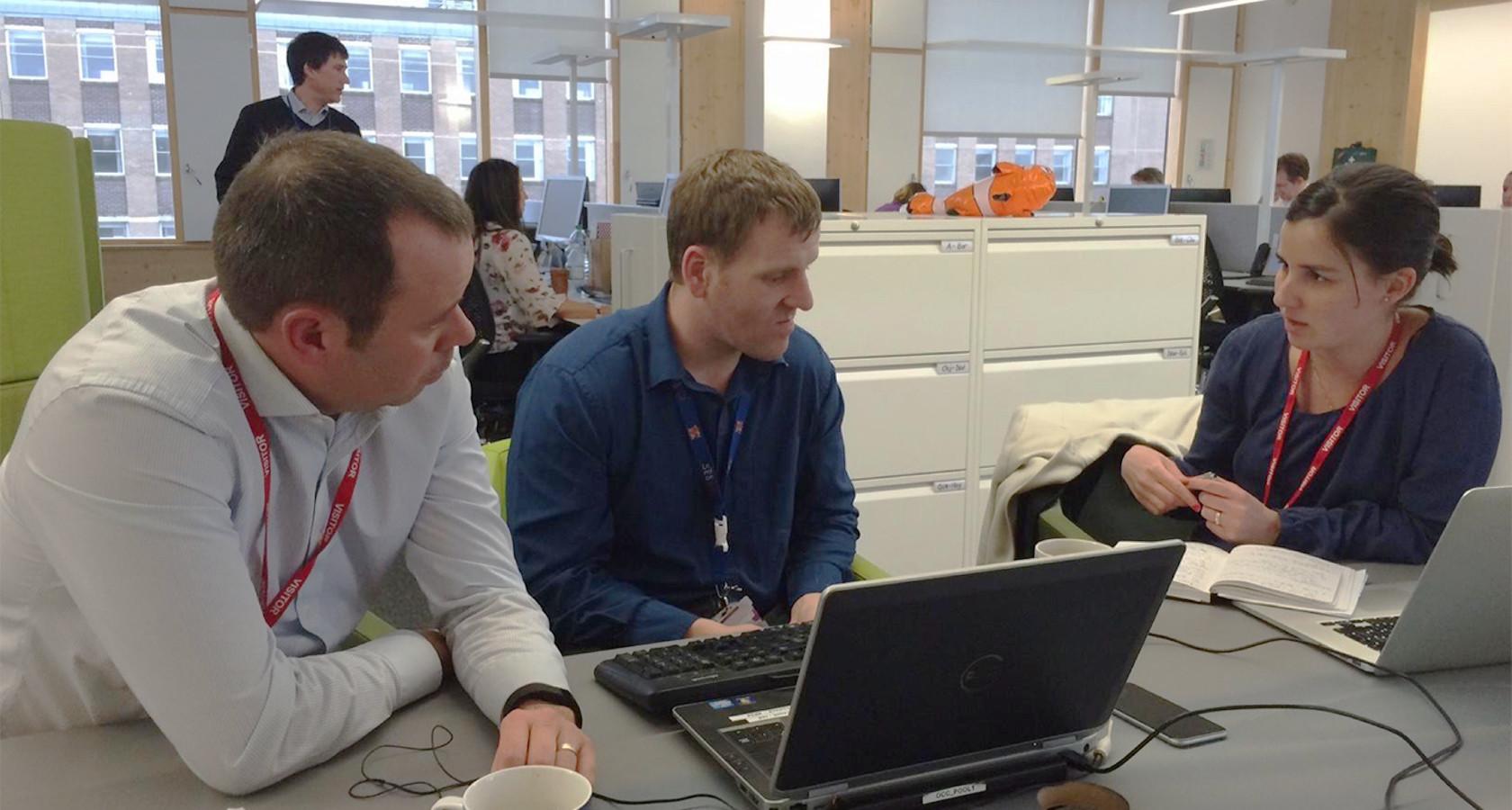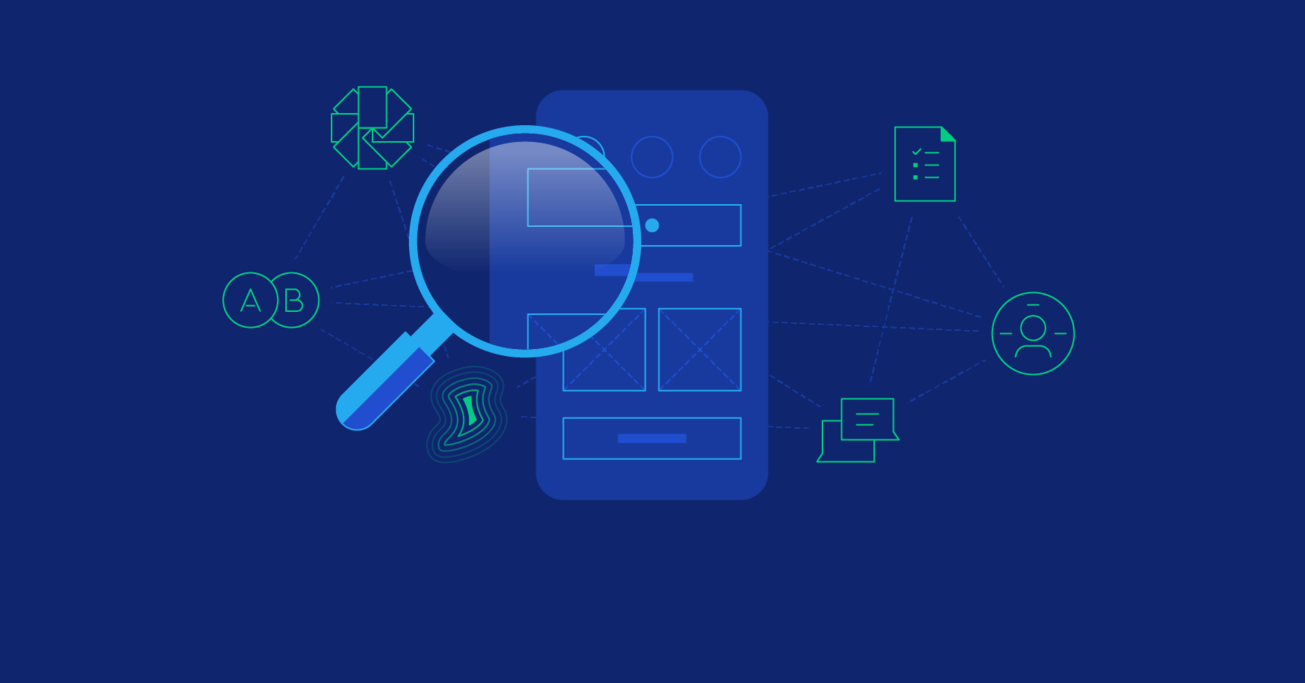UX Research Techniques and Their Applications
UX research techniques and their applications will result in better designs that avoid costly mistakes such as cost overruns, guesswork, following best practices, and reliance on industry knowledge.
UX research techniques and their applications will result in better designs that avoid costly mistakes such as cost overruns, guesswork, following best practices, and reliance on industry knowledge.
Michael is an experienced designer whose research-driven design process has resulted in purposeful user experiences that delight users.
Expertise
PREVIOUSLY AT

If we knew what it was we were doing, it would not be called research, would it? —Albert Einstein
User research existed long before it became a part of the user experience (UX) process. In the early 1900s, Frank and Lillian Gilbreth pioneered motion study. In order to gain a better understanding of efficiency, they observed how people moved in space by watching bricklayers at construction sites. Motion study consisted of a variety of procedures for the description, systematic analysis, and means of improving work methods.
These observations led to the infamous time and motion studies, which paved the way for modern-day user research as a means to improve products through methodical and investigative user observations.
User research has improved vastly since then. Everything from an app to a kitchen blender has a design team with an embedded researcher trying to figure out ways to attract attention and improve the user experience.

Prior to the influence of user research, products were made to be utilitarian with no attention being paid to UX. And while this may have resulted in designs that worked (sometimes), the lack of a user-centric approach led to failed products which were the result of guesswork and best practices.

“We’re reducing risk, which is ultimately what user research does,” says Ashley Sewall, Senior User Researcher at Cvent. “We make sure designers, product managers, and developers have enough information to make effective decisions that are going to decrease their risk.”
There’s a lot of information on how to conduct UX research and create UX research assets, but little on how to use these assets. It’s not about the technique, it’s knowing how to apply the results that lead to better user experiences and improved product designs.
UX Research Methods and Frameworks
Let’s take a look at some popular user research methods before diving into how they are applied.
Personas and Empathy Maps
Without knowledge of who our users are, the following UX research techniques will not be as effective. This is where personas and empathy maps play an important role.
Personas and empathy maps serve as guides to better understand who the core users are and what is going on in their minds. They are typically used when a designer is seeking to address tasks that need to be performed, pain points that are blocks, how users feel, and what they are trying to achieve.

User Interviews
User interviews are one-on-one sessions that can be conducted in a variety of ways (in-person, focus groups, etc.), though increasingly they are performed remotely using video apps such as Skype or Zoom. Another popular method is the guerrilla style of interview where a user researcher performs “drop-in” style interviews on a random selection of users (such as at a coffee shop).
User interviews require a lot of skill in order to obtain valuable information. The UX researcher is attempting to learn how a user feels about a specific topic, product, service, etc., and it’s important they do more listening than talking, record qualitative feedback, observe, and avoid leading questions.
Research has shown that five user interviews will uncover 80% of issues, and selecting these five users will give more accurate results if we remember to use the personas developed prior to performing the research.
Surveys
Surveys are scalable, inexpensive, and a quick way to collect specific information from users who fit the personas we defined early on in the research process.
The strength of surveys can also be their weakness. Because they are easy and less costly, there is a danger in using surveys and avoiding any further UX research methods. While surveys are certainly a great tool, they shouldn’t be used exclusively.
Card Sorting
Card sorts are another popular UX research method and are useful in determining the information architecture of websites and apps. They can be open, closed, or hybrid. A user is presented with a set of ideas/topics which they arrange into categories, either of their own choosing (open card sort), or pre-made (closed card sort) by the researcher.

As with surveys and interviews, card sorts should be performed with users who fit the user personas.
A/B Testing
When there is a need to test designs variations in order to find the most effective one, A/B testing, used primarily for conversion optimization, can also be used as a quantitative UX research method.
Users are presented with two different versions of a design, and pick which one they prefer; this also works to determine which features a user finds most useful, such as a button vs. a link.
With A/B testing, it’s a good idea to switch out the pool of testers. Over time, due to their familiarity with the product, the same people testing the same products can become biased and complacent.
Usability Testing
Usability testing is performed when designers want to observe how products are used by a representative user group.
During a usability test, users complete tasks while the UX researcher observes and takes notes. The researcher gathers both qualitative and quantitative data in order to find usability issues.

To run an effective usability test, it’s good practice to think about which user personas would be a good fit, and recruit early in the process. Incentives are often offered to users, but some UX researchers believe this adds a strong element of bias to the test, i.e., are the users only doing this for the incentive?
Practical Applications of UX Research Results
Unless there is an effort to analyze and act on the results of the UX research data, all of the work that went into the research loses its effectiveness.
If we think of UX research as part of the scientific method, then it will follow this format:
- Make an observation – Interviews, surveys
- Form a hypothesis – Make an assumption and draft a prototype
- Perform the experiment – Usability studies, A/B testing, card sorts
- Analyze the data – Perform analysis on the qualitative/quantitative feedback
- Report the findings – Discuss with the team and the client
- Invite others to reproduce the results – Collaborate and iterate
Using each of the above UX research methods, let’s look at a few ways to apply actionable insights from the research data gathered.
Applying Personas and Empathy Maps
Personas and empathy maps are a powerful set of tools that UX researchers can use for usage scenarios, characters for experience maps and storyboards, and as a focal point for ideation.
For example, if we have a persona attribute that signals “impatient/busy/always in a hurry,” we can make certain design decisions which enable this user to take shortcuts within the product and thus save them time.
Another use of personas is getting everyone (product, engineering, marketing, sales, and customer service) on the same page about who the users are, thereby facilitating a more unified user experience.
Implementing User Interview Data
User interviews result in qualitative data. With this data, we can use frameworks such as thematic analysis, which is the process of identifying patterns and themes using qualitative data.

An example is a user interview with the goal of getting feedback for a set of reports produced by an application.
The user interviews are completed and the data is analyzed using thematic analysis which shows a theme of customization. We can make an assumption that our users want to be able to customize their reports and have more control over them. This assumption can then be tested with further UX research.
Another practical use of user interviews is the opportunity to listen and observe. Users tend to give a lot of clues during an interview, such as making verbal side-comments, or non-verbal gestures. These observations can give insights into how users are truly feeling and thinking.
Employing Survey Results
Surveys provide a flexible set of data to work with. For example, we could have an idea to build a car-buying application that automatically calculates the car insurance rate for each listing.
Before spending the time and money to build out the application, surveys can be used to quickly gather information from a large number of users to see if it’s something people actually need.
If surveys are combined with usability testing, they can help find the answers to questions that pure analytical methods of UX research can’t tell us. For example, heat maps (a form of usability test), can tell us where users are interacting the most (and least) with an app or website, but they don’t tell us why.
Use surveys to ask why the user takes the actions they do, and then use this information to improve the product.
Using Card Sorting Data
A practical use of card sorting is to help determine how users would classify and organize topics for a website or app. The results of the card sort can then be used to construct an information architecture that fits their needs and goals.
An example is a florist website. We may have an idea of how users will want to navigate the site; however, when we do a card sort and ask users to provide categories, we learn that they look for flowers based mainly on color, not seasonality or special occasion.
Practical Use of A/B Testing Data
The data from an A/B test is mostly quantitative and binary; the user likes one version of something, or the other version.
One practical application which received a lot of coverage was Spotify testing their “burger menu.” Spotify used the standard three-line menu icon on their mobile app for a long time but decided to do an A/B test. To their surprise, this popular design was not a winner with their audience. Instead, users preferred a tab bar.
This had a major impact since there are millions of users who use the app daily. Changing to the new tab bar resulted in a better user experience and decreased subscription churn.

Applying Usability Testing
Usability testing produces both qualitative and quantitative data. There are several advantages that can be had with this data depending on the type of testing done and the presumed outcomes.
An example is a moderated usability test in which we observe a user during the checkout process of a new shopping app. What we see is the user trying to add a product to the cart several times, but unable to do so, finally abandoning the process altogether. Taking this feedback, we would go back to the drawing board to revise the checkout flow.
A second way of applying usability tests is validation of a prototype or MVP. For example, we might be redesigning a mobile coupon app and realize that there is no way for a user to perform a search for deals because they get stuck in the category they initially chose. This realization leads the design team to focus on the user flow within the app and improve the user experience.
Summary
Today’s experience economy shapes industries, transforms businesses, and helps companies build deeper, more meaningful, and more profitable relationships with their customers. By selecting appropriate UX research techniques and applying them diligently, designers can come up with products that serve both customers and businesses more effectively.
Further Reading on the Toptal Blog:
Understanding the basics
How do you do UX research?
UX research is done using certain methods and frameworks which is decided based on the project and needs of the researcher. It is done by first identifying a specific type of user, then picking a research method, performing the research, and then analyzing the results.
What's a UX researcher?
A UX researcher is someone, usually from the UX field, who specializes in doing research using a methodical and investigative set of procedures to learn more about users needs, wants, and behaviors.
Why is UX research important?
UX research is important to both the design process and the business. It helps avoid guesswork, costly mistakes, and not creating products which are delightful and actually used by the audience intended.
What is a heat map chart?
A heat map chart shows where users interact the most and least with an interface, such as a web page. Heat map charts use both color and percentages to indicate where users have either clicked or scrolled to the most and the least.
What does a heat map tell you?
A heat map tells you where users interact with a web page or app the most or least using color and percentages. They are used to help researchers make more informed decisions to improve the user experience.
Michael Craig
Albany, GA, United States
Member since November 7, 2016
About the author
Michael is an experienced designer whose research-driven design process has resulted in purposeful user experiences that delight users.
Expertise
PREVIOUSLY AT


